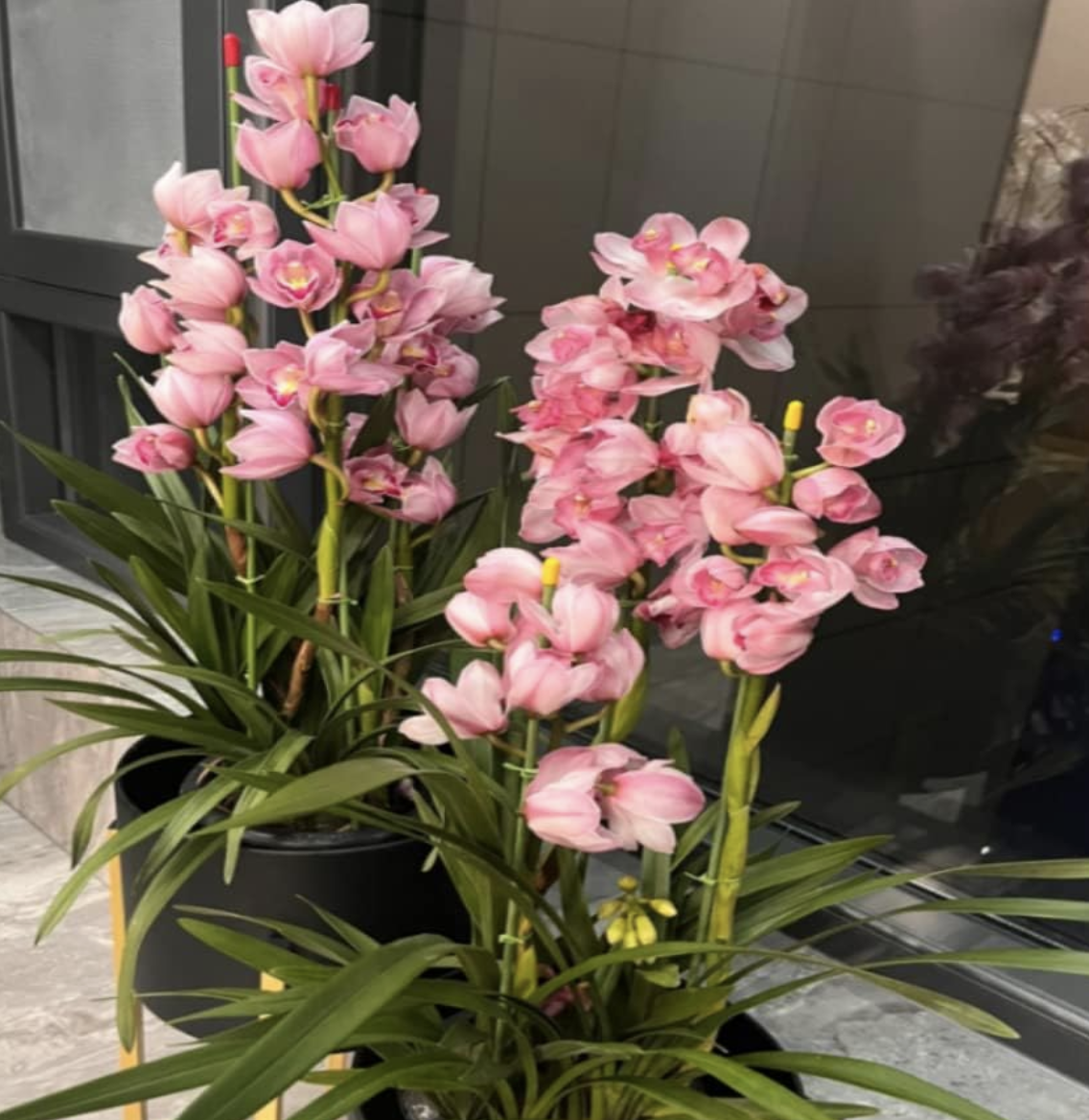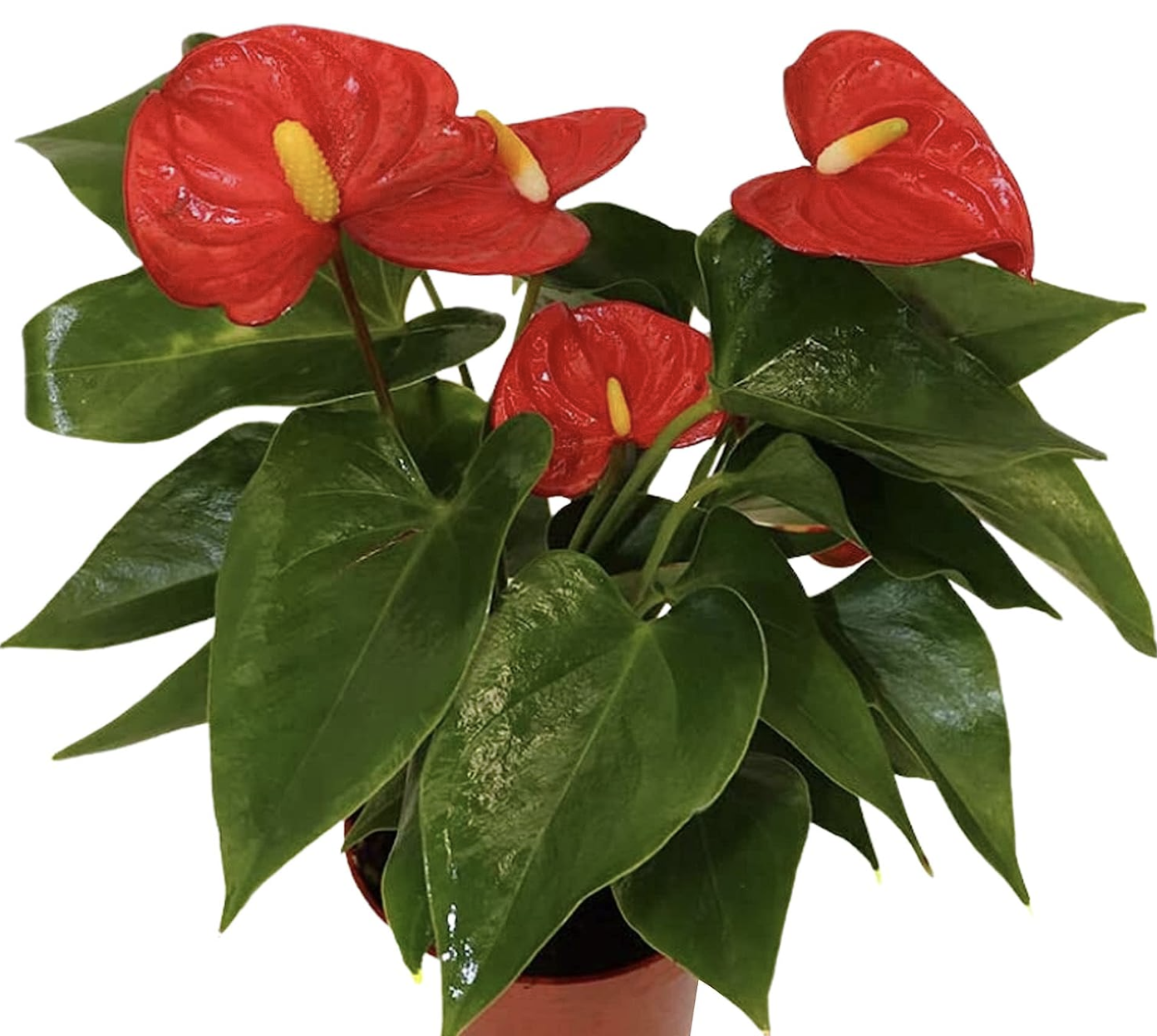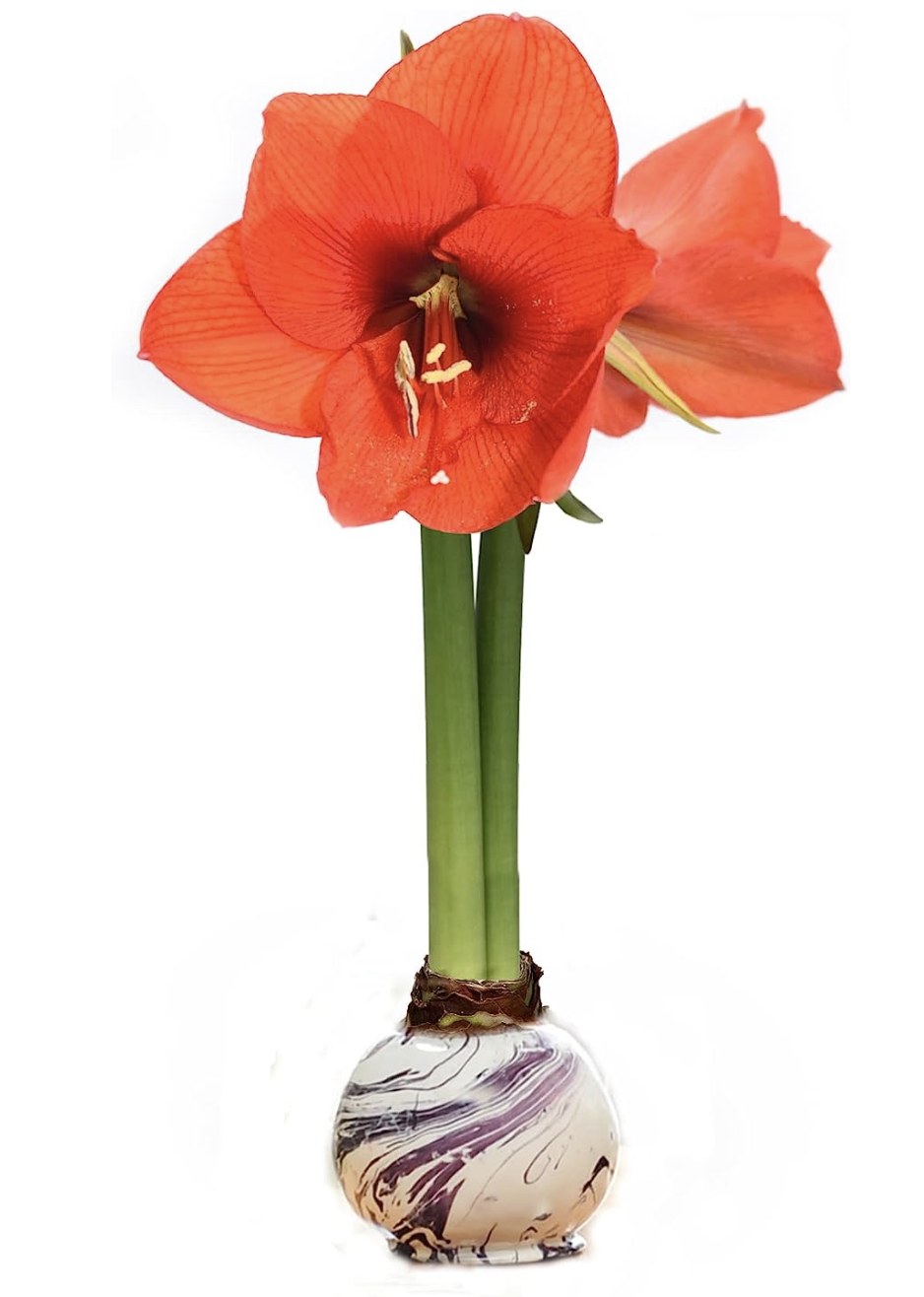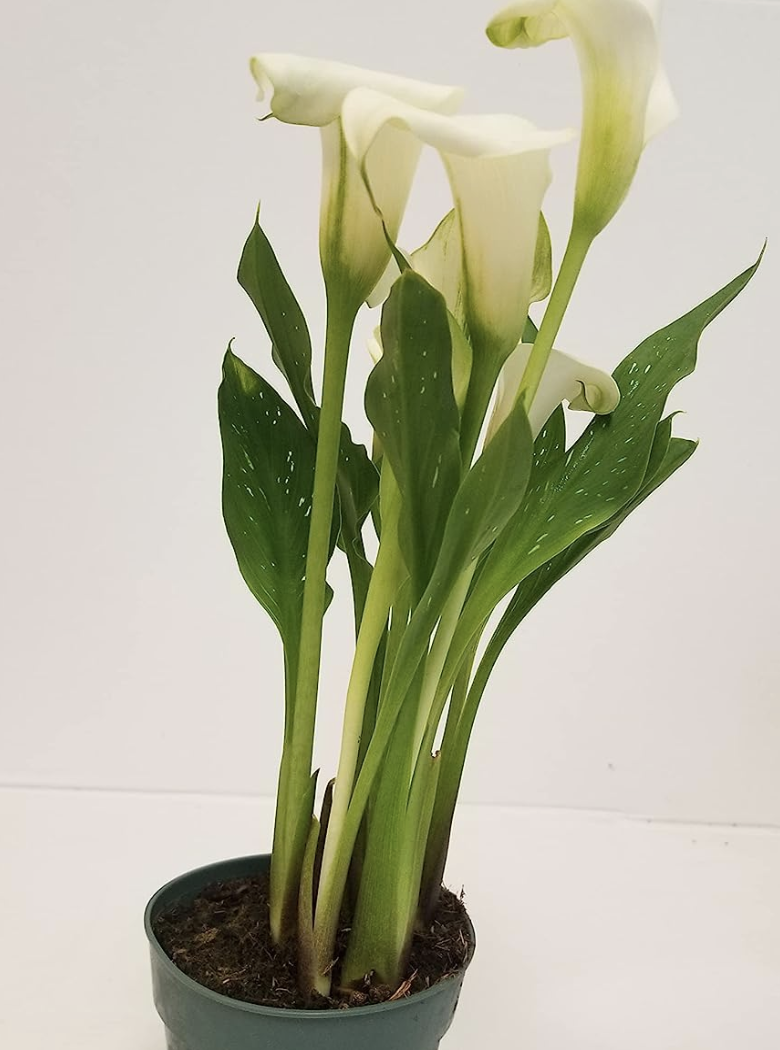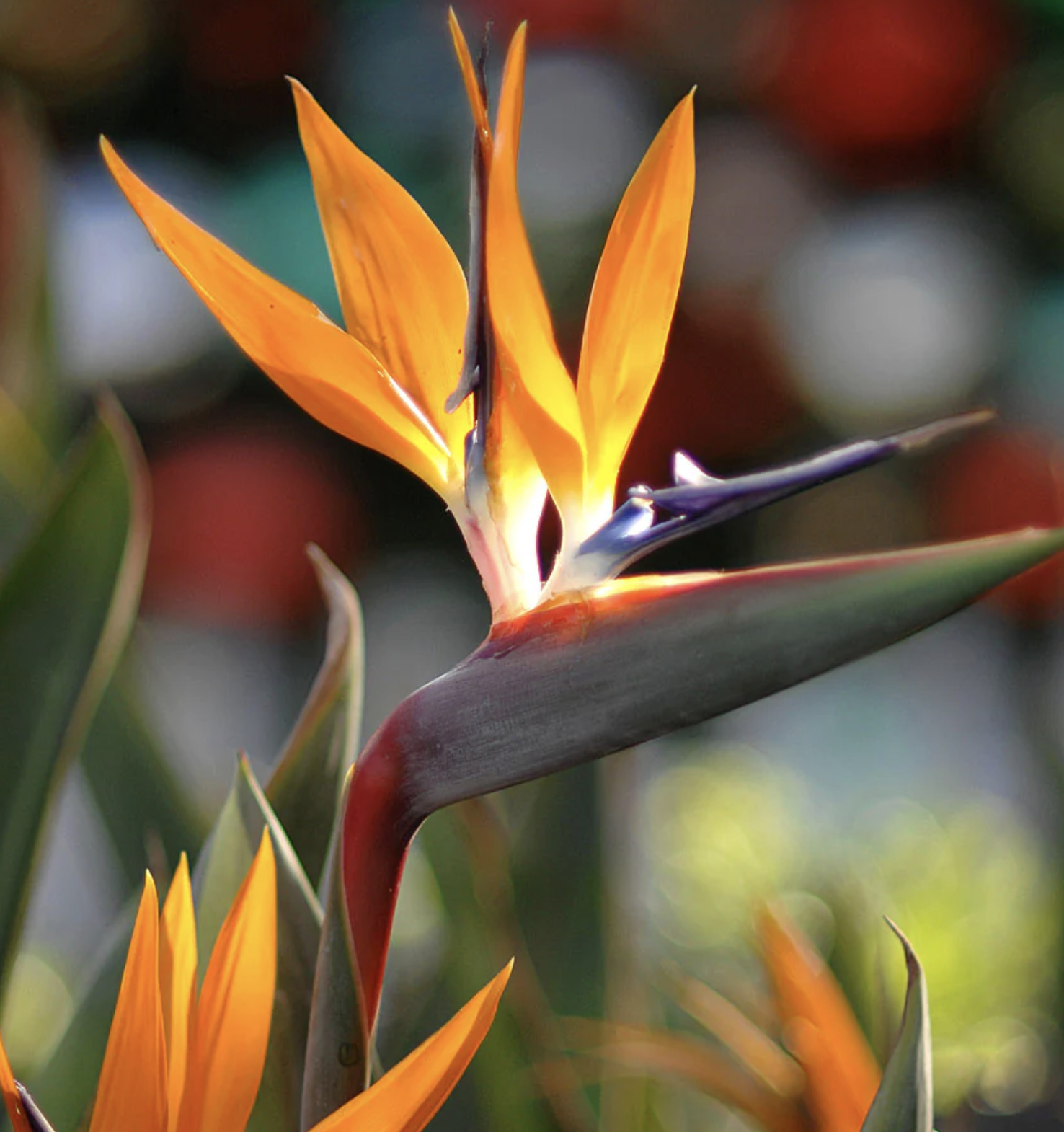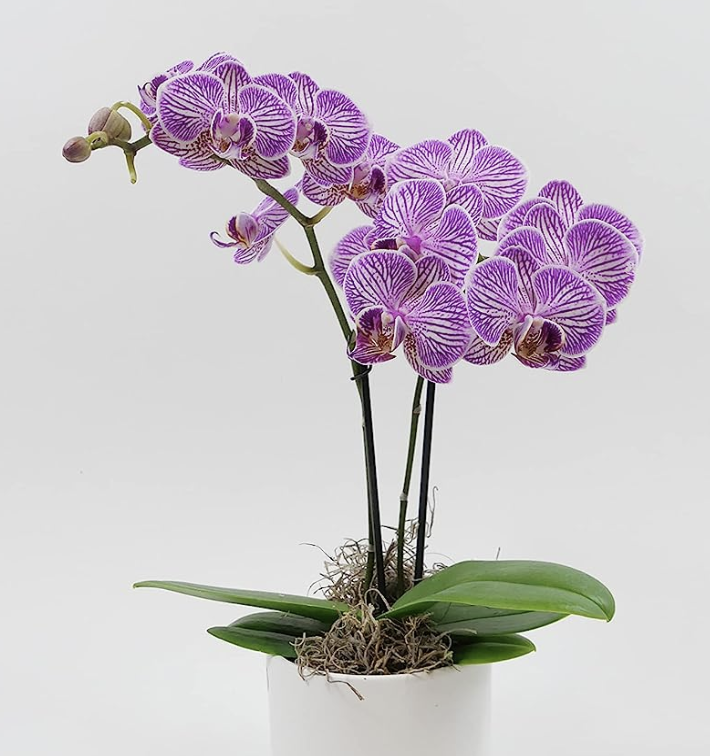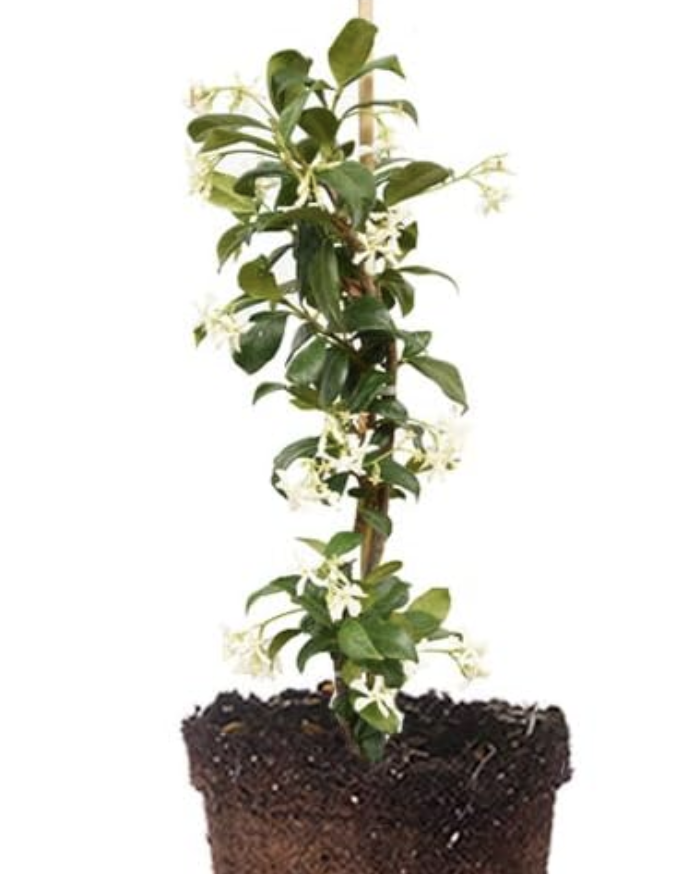8 tropical flowers to grow indoors and make your home feel way more luxe and look so much more beautiful
Growing tropical flowers at home is simple with this expert advice on the best ones to choose and how to care for them
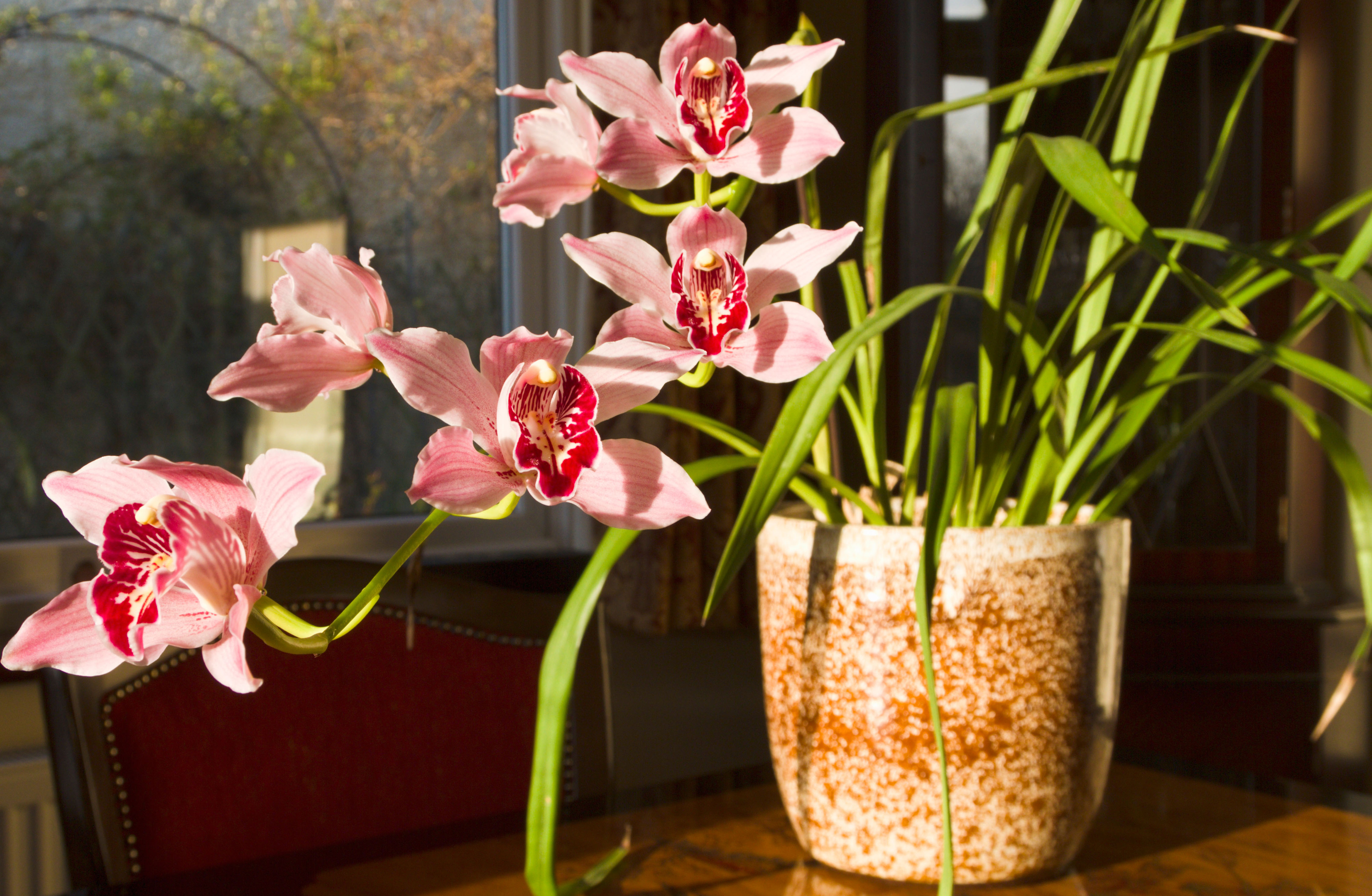
We're all familiar with the joy that tropical flowers bring to a home. Whether received, bought or picked, their colors and scent lift a living space. The downside is that their beauty is so fleeting. Even if you're well versed in how to care for flowers in a vase, two weeks is likely the maximum you can expect from them.
An alternative is tropical flowers you can grow in your indoor garden. Growing and tending to them yourself, is a way to enjoy beautiful blooms for longer. It could also cut your carbon footprint. Plus, tropical flowers are some of the best plants to add color to your home.
'Flowering plants add so much beauty to our homes and are fun to grow,' says Lisa Eldred Steinkopf, the houseplant guru and author of Bloom. 'There is much pride to be had when your plant bursts into bloom and you know you had a part in it.'
8 tropical flowers to grow indoors
'Blooming takes a large expenditure of energy from a plant,' continues Lisa. 'Flowering houseplants need more light to bloom than those grown for their foliage. So before purchasing a flowering plant, it would be prudent to determine the amount of light you have available, especially if adding supplemental lighting isn't possible.'
1. Cymbidium Orchid
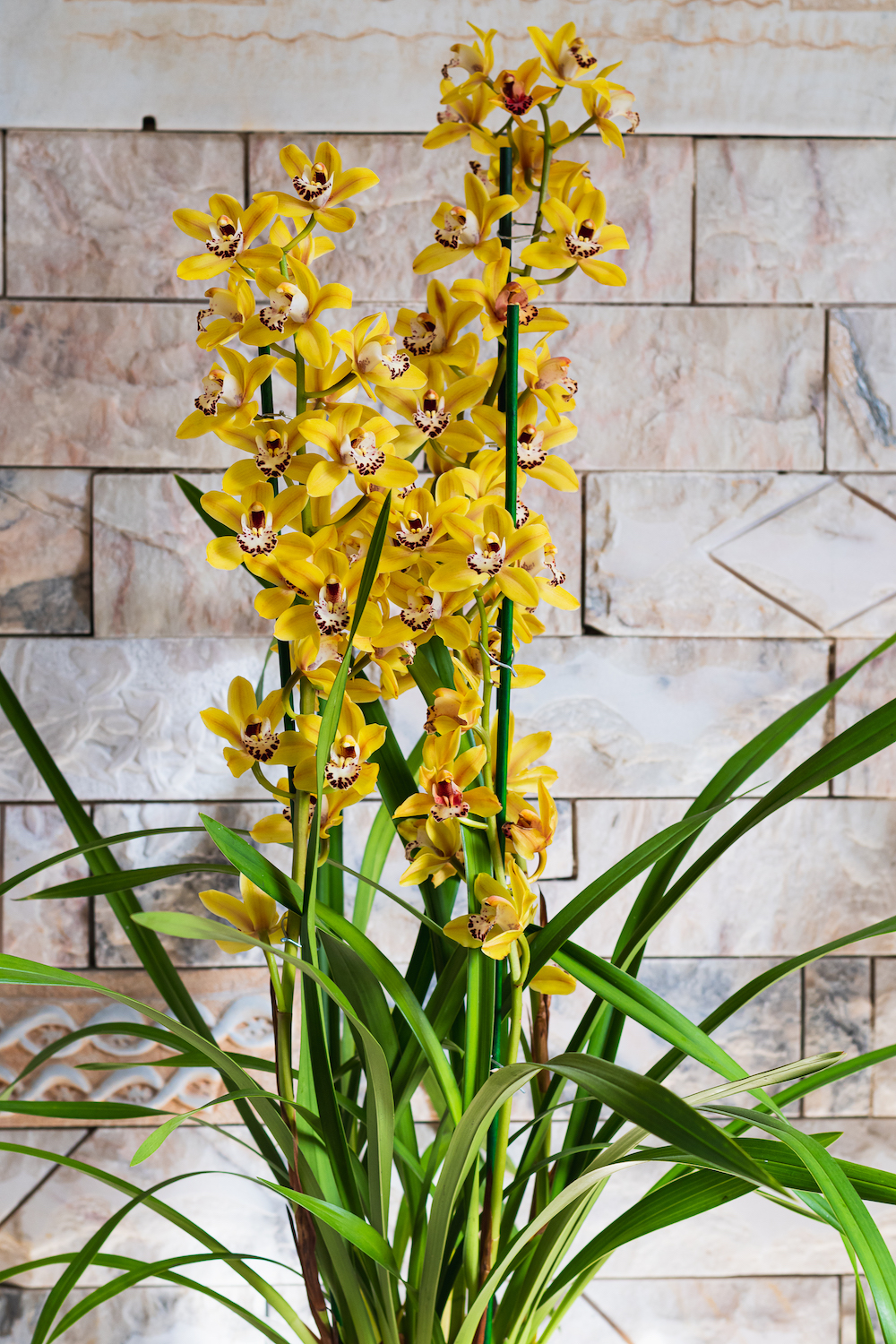
What plants are best for a lush indoor garden? It has to be orchids. With their delicate patterned petals and beautiful hues, they are one of the most loved tropical indoor flowering plants.
Although, there are thousands of varieties of this popular plant, Cymbidium orchids are one of the most easy-going and available.
'With a little ingenuity, it is possible to provide suitable growing positions for a variety of these beauties in almost any room in the house,' says William Davidson, plant expert and author of Dr Houseplant. 'Temperatures that are comfortable for people are fine for these home-grown orchids.'
Orchids are generally pretty low maintenance plants for indoor gardening. 'Cymbidium need good light at all times, and will benefit where they receive direct sunlight during the winter, but they must be protected from the hottest summer sun,' William says. 'Water in the morning on sunny days so that the plants begin to dry out as the temperature rises. Watering once a day may be necessary during the summer. Once or twice a week will be more usual at other times of year, reducing to once a week or once every two weeks in the winter. If possible, use rainwater at room temperature.'
2. Flamingo flower (Anthurium)
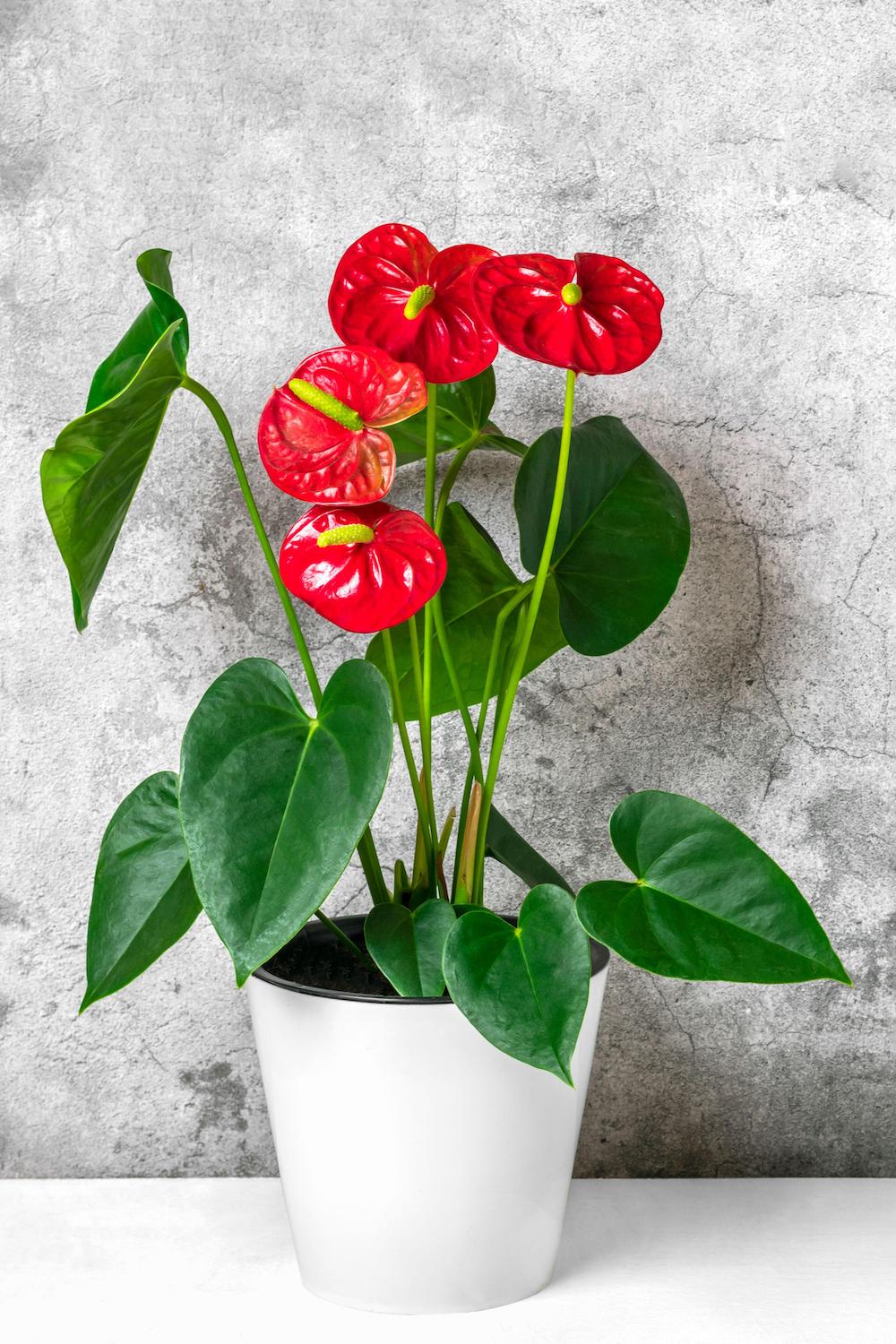
Loved for their patent leather-like inflorescences and gorgeous foliage, these tropical plants will grow well indoors. Originally found in red and white, the Anthurium color palette has grown to include purple, pink and striped versions, thanks to hybridizing.
Although it needs bright light to bloom, so is great for how to turn your windowsill into an indoor garden, in its natural home in the jungles of Ecuador and Columbia, Anthurium grow as understory plants, beneath others.
'Anthuriums receive dappled light in their natural habitat and can become sunburned with too much light,' says Lisa Eldred Steinkopf, The Houseplant Guru.
'An east or west exposure is best, so steer away from southern light. Though the large showy part of the inflorescence is thought to be the flower, this is a spathe or modified leaf. The small tail that sticks up from the spathe is the flowering structure of the plant.'
In fact, they're one of those indoor plants that flower all year round. 'The inflorescences can last for months with the right care and may be in continuous bloom throughout the year, adding color to your indoor garden. Always keep the potting medium moist but don't leave it standing in water.'
3. Amaryllis

Popular during the holiday season, these tropical South American plants will reward you with big beautiful blooms in shades of red, white and variegated versions. Instead of buying mature plants, sow bulbs yourself for a surprise come Christmas. Amaryllis are one of the best indoor plants to add color.
'Try to find loose bulbs, as this is the preferable way to buy an Amaryllis,' says Lisa. 'Invest in the largest bulb possible as it may send up two to three stems, with as many as six flowers on each. Soak the roots of the bulb in a glass of water for an hour or two before planting. Don't let the bulb touch the water, just the roots. The bulbs have usually been stored for some time before they get to you, so the roots are often wrinkled and desiccated.'
The type of pot you choose is important. 'Find a tall, narrow pot (around one inch wider than the bulb on either side) to house your bulb and plant in a well-drained potting medium,' Lisa says. 'The top 1/3 to 1/2 of the bulb should be showing above the soil. Water it lightly, place in a bright, warm spot and wait for the bulb to come to life. At the end of summer, allow your plant to dry out and let the leaves die down. You can remove the bulb from the pot, or leave as is. Cut the yellowing leaves off and allow the bulb to rest for at least two months.'
Happily, it will then re-bloom. 'Six to eight weeks before you want it to flower again, start watering the bulb again and wait for it to send out its next display of flowers,' Lisa adds.
4. Calla lily (Zantedeschia aethiopica)
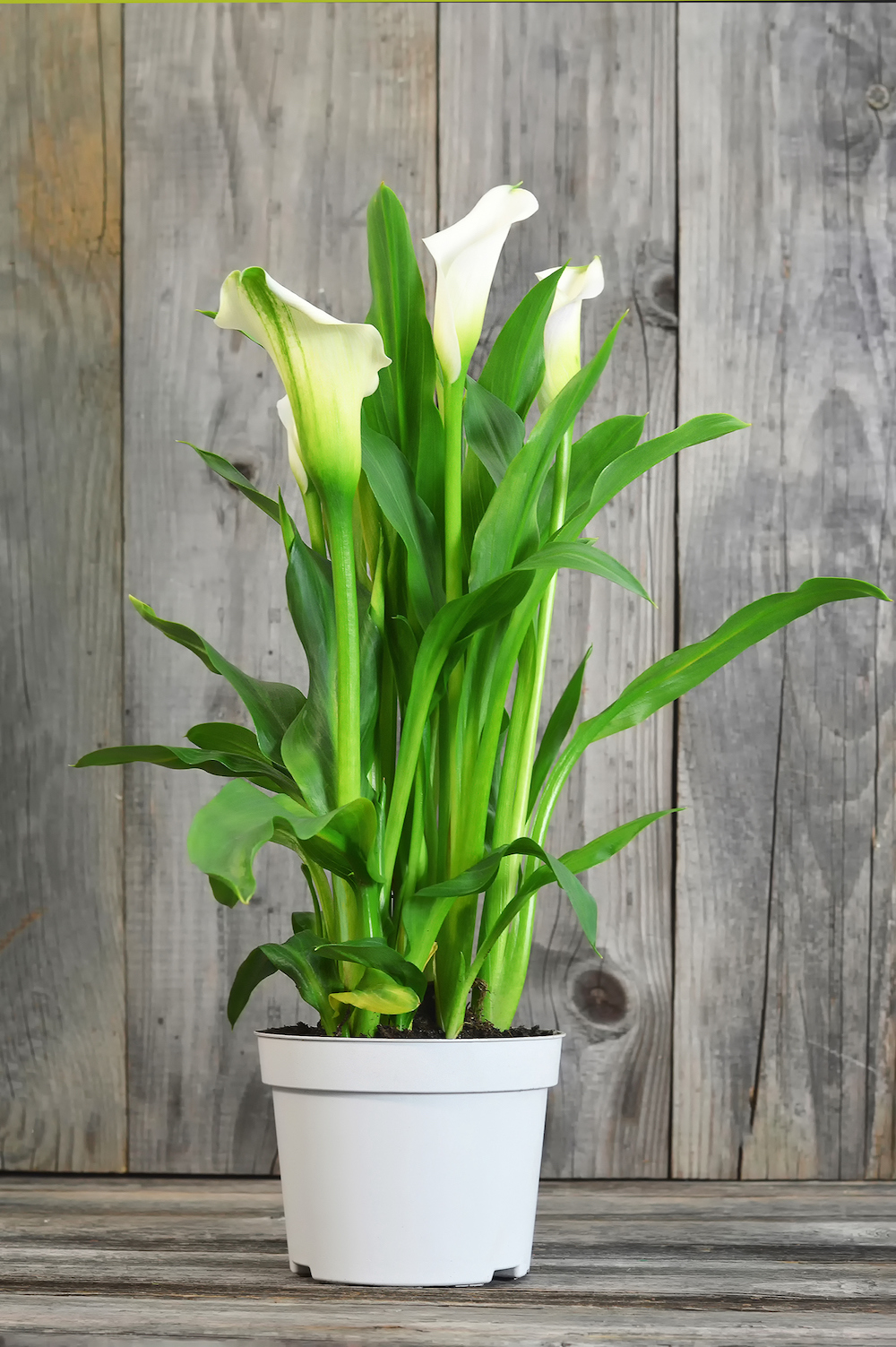
The elegant blooms of a Calla lily make a beautiful addition to an indoor garden. Although not technically flowers – its blooms are spathes, which provide protection for the buds – they still provide a beautiful floral display. They are often seen in indoor zen gardens, associated with peace and calm.
The wide variety of cultivars available, ensure many colors to choose - from white, yellow and orange to deep purple.
In the wild Calla lilies are often found growing on the edges of ponds or streams. So they are a good choice for those who find watering plants therapeutic, as they like their soil to be kept moist.
Feeding Calla lilies with low-nitrogen fertilizer during the growing season will help them to flower. These plants like some sunshine, but do avoid placing them in spots that catch the midday sun.
According to Bloomscape's plant expert, Lindsay Pangborn between 60-80 degrees F are optimal temperatures for growing Calla lilies.
'Water your Calla lily until liquid flows through the drainage hole at the base of the pot and discard whatever has accumulated in the saucer,' says Lindsay. 'This plant also likes humidity. So place a humidifier nearby, group it with other plants, or use a pebble tray.'
'Any spent flowers should be pruned. If your plant hasn't bloomed during the growing season, it may need more light. It will also need a six-week rest in the winter with lower temperatures, reduced light and drier soil. This will encourage blooms in the spring and summer.'
6. Wax flower (Hoya carnosa)
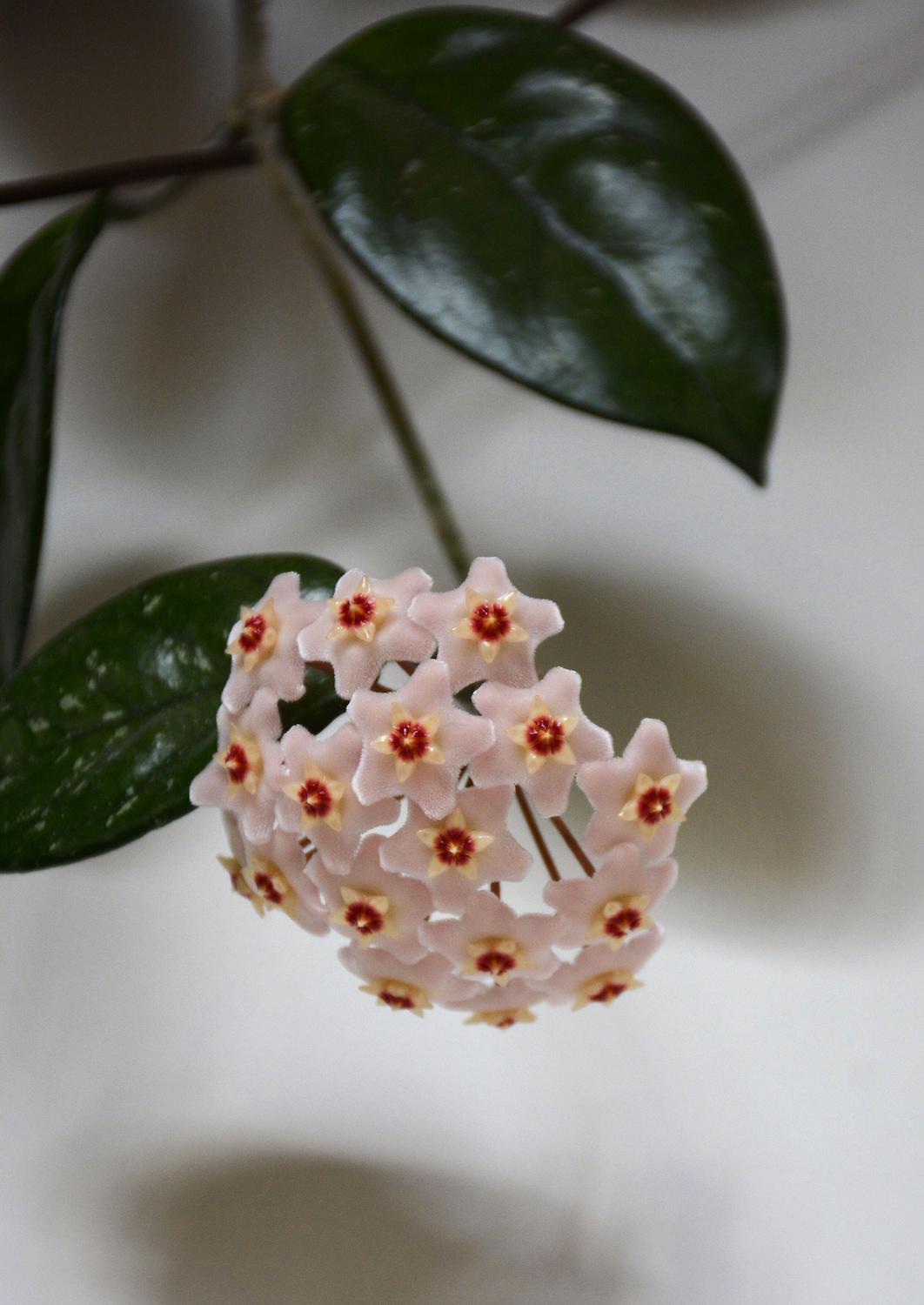
Clustered in half ball shapes, these pretty pale pink or white flowers hang like upside umbrellas from the plant's vine-like structure. Because of this, 'wax flower' or Hoya look lovely in a hanging or tall container, where it can gracefully trail. The pretty blooms also give off a sweet floral scent.
Like most other plants, Hoya will need a bright light to flower. It doesn't like the cold, so keep it in a warm spot.
'An unobstructed south or west window should give your plant enough light to bloom,' says Lisa. 'Since there is such a large variety of Hoya with different needs, it's worth trying them in different windows to see how they do. They can also be grown under electric lights.' If you're really keen, hydroponic gardening could help you here.
'They like to be watered thoroughly, in a well-draining soil, and to be left to dry before watering again,' Lisa adds.
6. Bird of Paradise (Strelitzia reginae)
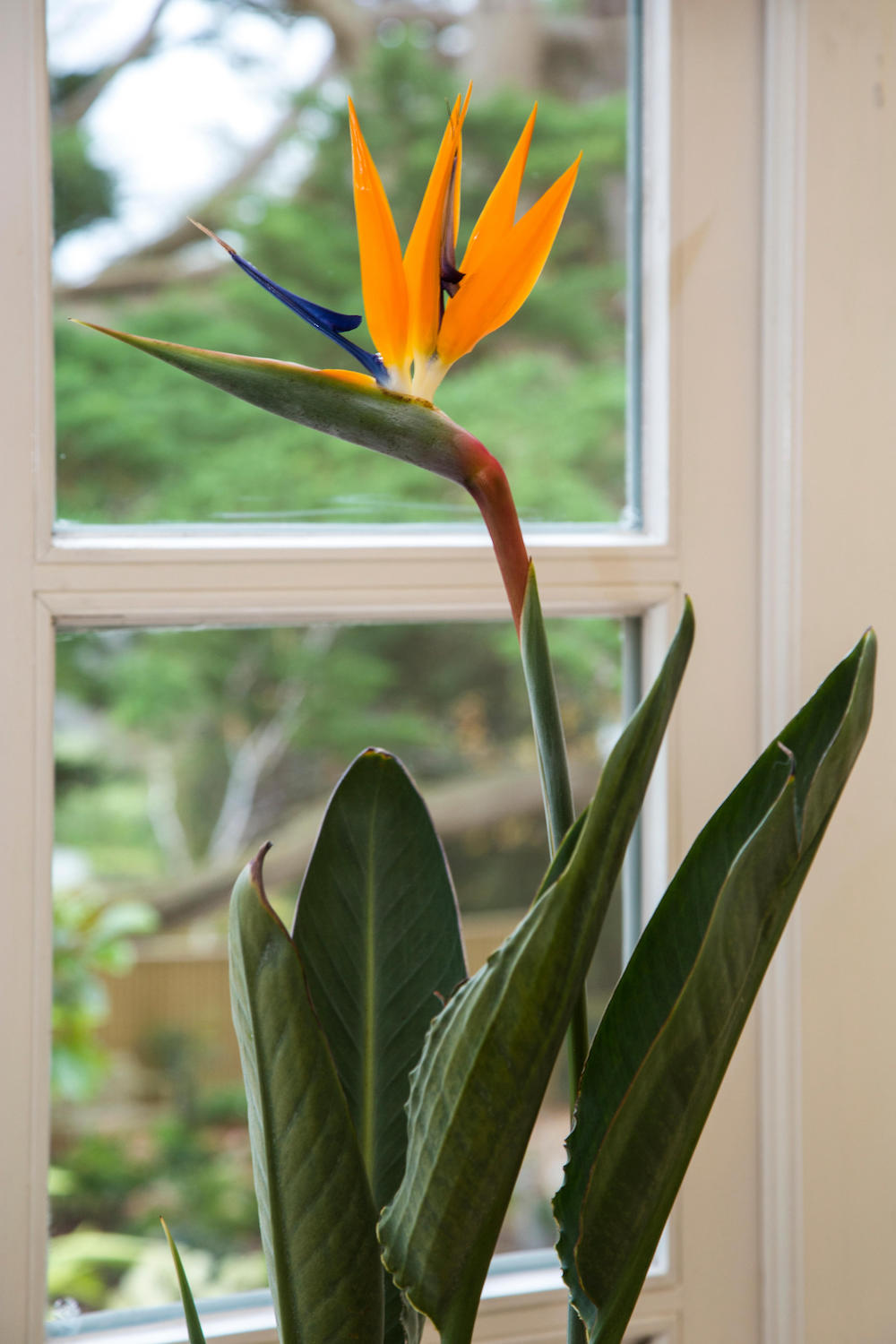
Admired for its lush foliage, this statement plant also has colorful flowers that will grow indoors. In fact, its name is derived from its beautiful orange and blue blooms which resemble tropical birds of paradise. One of the reasons designers love this an an indoor plant that will make a room look more expensive - it just has an air of exotic luxe to it.
These plants need to form a healthy root clump before they can flower, which can take from three to six years. So buy a mature plant if you're keen for it to flower sooner rather than later.
This isn't a plant to place on a windowsill. Bird of Paradise can grow three to four feet tall. Find them a roomy spot in bright, direct sunlight away from cold draughts, where they can be enjoyed in all their glory.
'Bird of Paradise is a symbol of love and the official flower for a ninth wedding anniversary,' says Matt Slaymaker, plant expert at Lively Root. 'They are easy to care for too. Allow its soil to dry out between waterings and feed it liquid fertilizer bimonthly from spring to fall. It likes temperatures around 65-80 F and doesn't need any extra humidity. Once it has flowered, remove spent blooms and any old browning vegetation to keep it in good health.'
7. Moth orchid (Phalaenopsis)
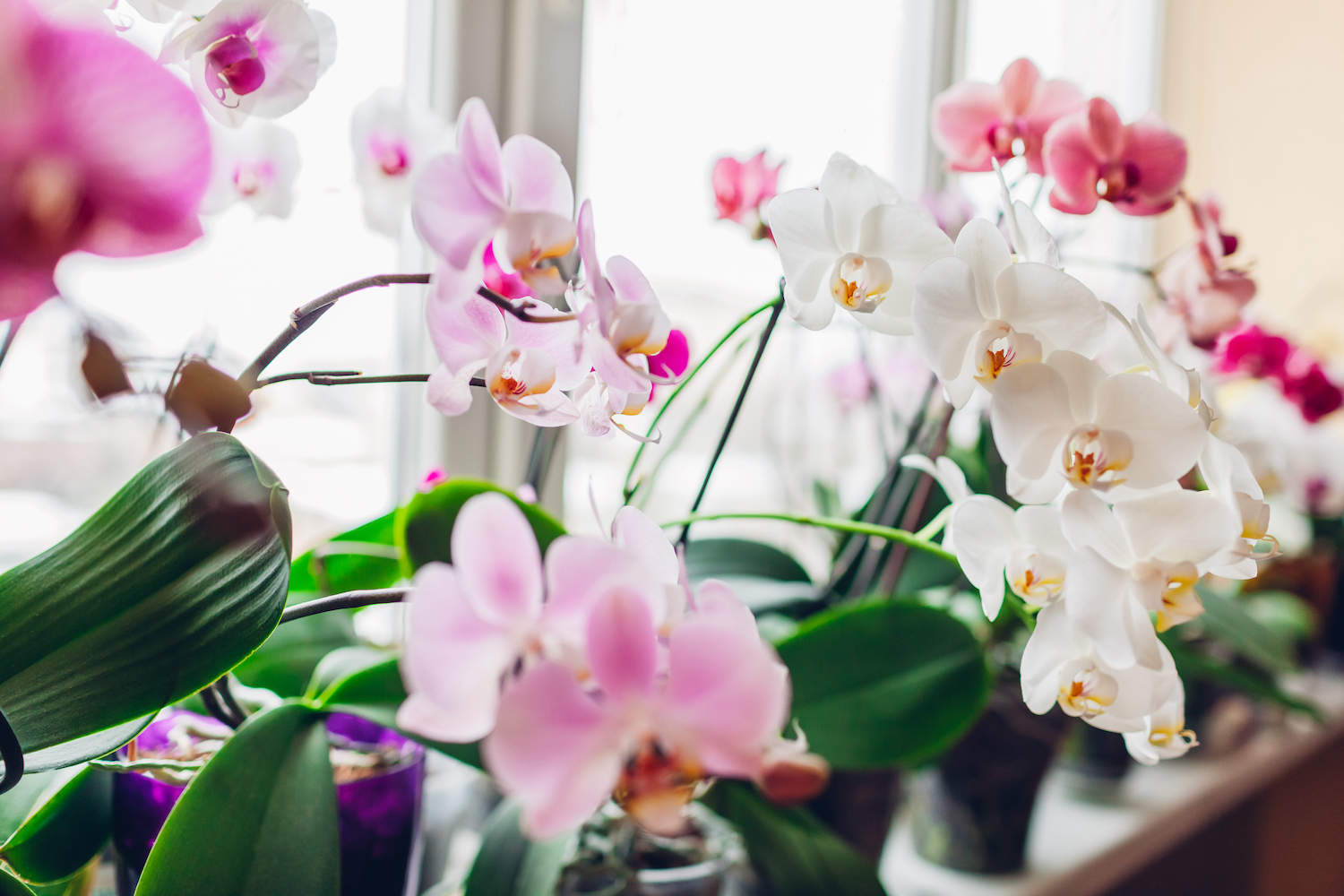
Another elegant and easy-going orchid is Phalaenopsis or the moth orchid, which will flower for up to three months per year.
This plant likes its compost moist during the summer and warmer months. Ideally, give your moth orchid a soak in the sink for an hour or so and let any water drain away, before placing it back in a cachepot or drip tray.
Only water it occasionally in winter, while it's conserving energy, before it re-blooms the following year.
Originating in India, China and south east Asia, Phalaenopsis loves humidity so a bright spot in a kitchen or bathroom would suit best.
'If your Phalaenopsis is wilting or has wrinkling leaves it is most likely under-watered,' says Paris Lalicata, plant expert at The Sill. 'If it has yellowing leaves that could be due to over-watering or too much sun.' We have a handy guide on how to get orchids to rebloom, too.
8. Jasmine polyanthum
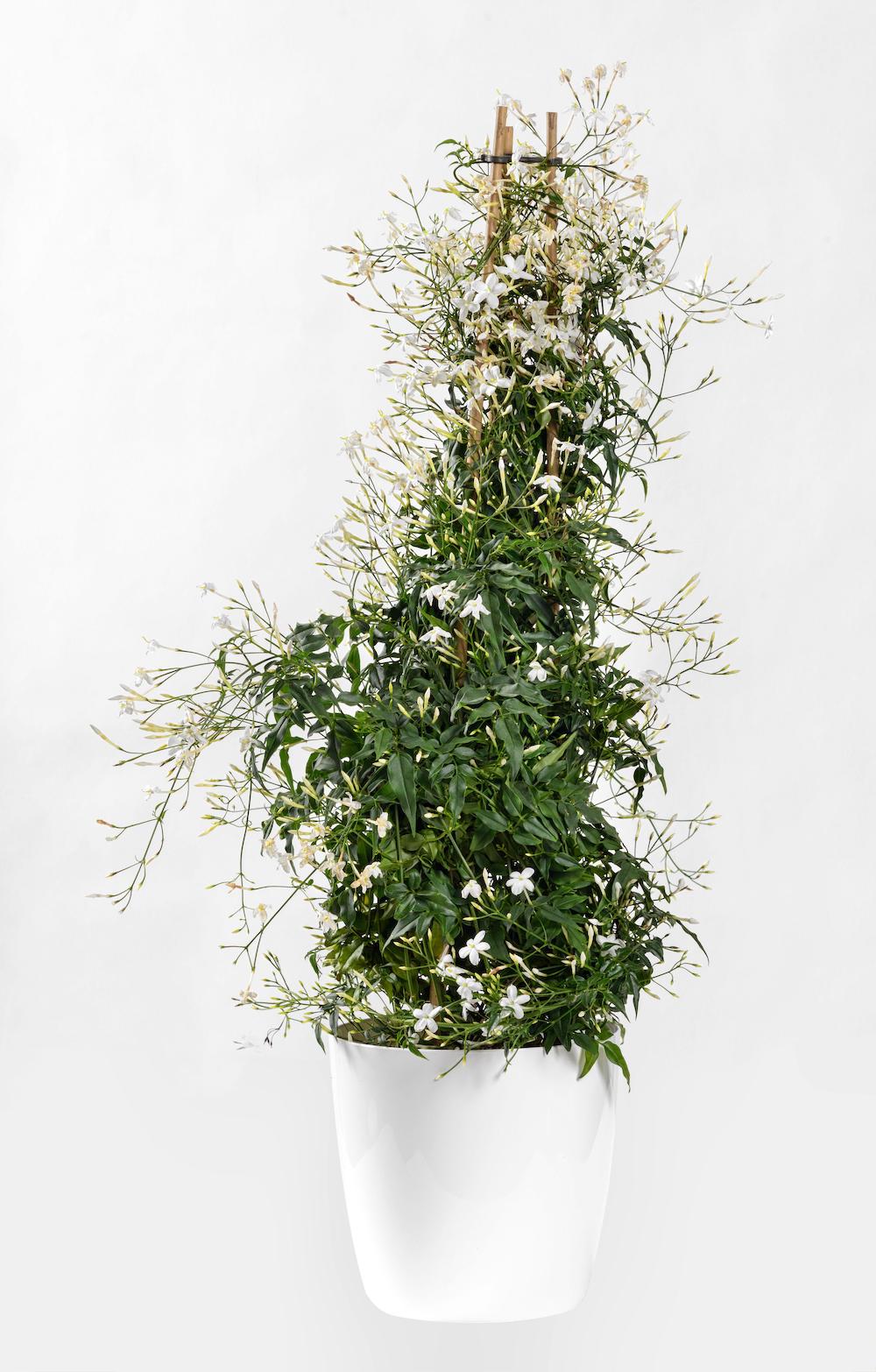
Sweet-scented Jasmine may be more familiar climbing walls and as one of the best plants to cover a fence in your backyard, but it is a tropical flower you can grow indoors too. As with growing Jasmine outside, it does like to climb, so do give it a frame or wire hoop to curl around.
During the summer, your Jasmine will be happy in a warm, bright spot but in the winter it likes to be a little cooler.
'Jasmine polyanthum prefers a winter minimum of 55°F,' says William Davidson. 'While these plants are growing and flowering, give them plenty of water, enough to keep them thoroughly moist at all times.
'While they are resting, only provide them with enough water to prevent the potting soil from drying out completely. Provide a liquid feed once every two weeks from late spring to late fall.
'Jasmines are strong growers, and will therefore need hard pruning to keep them under control. Cut back stems that have flowered as far as necessary, but not completely; they flower on growth made the previous season, so some new shoots should be left unpruned. Pinch out the growing tips when young to encourage bushy growth.'
Be The First To Know
The Livingetc newsletters are your inside source for what’s shaping interiors now - and what’s next. Discover trend forecasts, smart style ideas, and curated shopping inspiration that brings design to life. Subscribe today and stay ahead of the curve.
Jacky Parker is a London-based freelance journalist and content creator, specialising in interiors, travel and food. From buying guides and real home case studies to shopping and news pages, she produces a wide range of features for national magazines and SEO content for websites
A long-time contributor to Livingetc, as a member of the team, she regularly reports on the latest trends, speaking to experts and discovering the latest tips. Jacky has also written for other publications such as Homes and Gardens, Ideal Home, Red, Grand Designs, Sunday Times Style and AD, Country Homes and Interiors and ELLE Decoration.
-
 Turns Out the Coolest New Café is Actually In Your Kitchen — Here's How to Steal the Style of TikTok's Latest Trend
Turns Out the Coolest New Café is Actually In Your Kitchen — Here's How to Steal the Style of TikTok's Latest TrendGoodbye, over-priced lattes. Hello, home-brewed coffee with friends. TikTok's 'Home Cafe' trend brings stylish cafe culture into the comfort of your own home
By Devin Toolen Published
-
 5 Bathroom Layouts That Look Dated in 2025 — Plus the Alternatives Designers Use Instead for a More Contemporary Space
5 Bathroom Layouts That Look Dated in 2025 — Plus the Alternatives Designers Use Instead for a More Contemporary SpaceFor a bathroom that feels in line with the times, avoid these layouts and be more intentional with the placement and positioning of your features and fixtures
By Lilith Hudson Published
